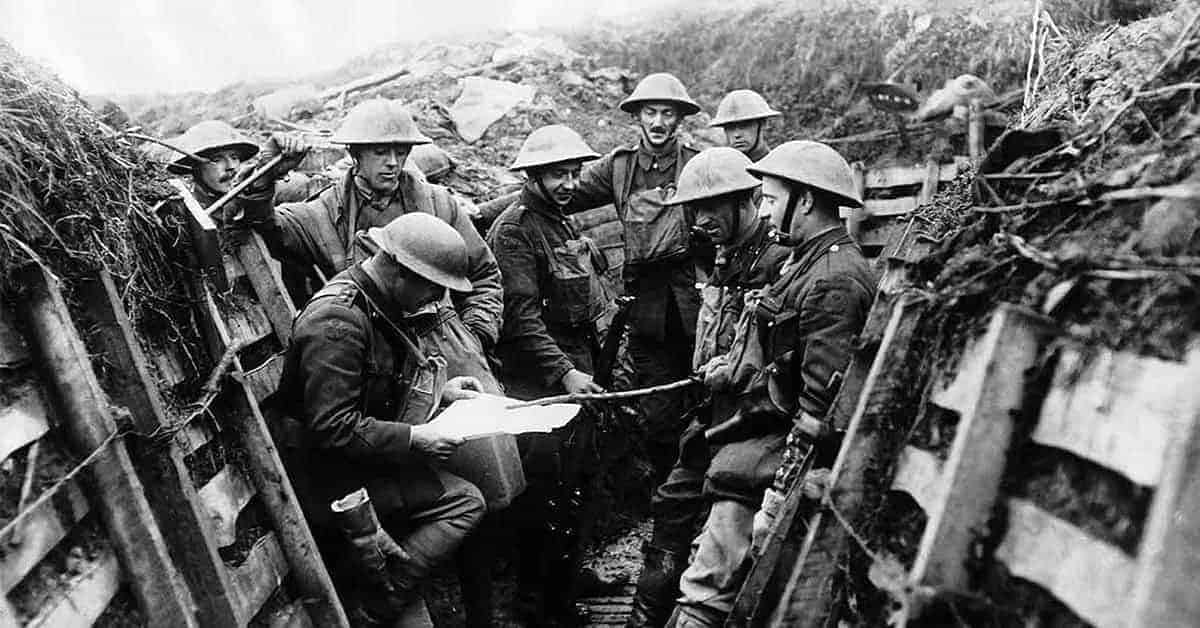It is often said that necessity is the mother of invention. Few situations can provide as concrete a need for new and innovative items than a war, in which the very future of a nation is threatened. With need as high as it can be, the greatest of minds come together to invent things that will outlast the war situation, and never was that more true than in the First World War.
In a lot of ways, World War One represented the first industrialized war – or at least the war in which killing was done on an industrial scale – in which machines could legitimately claim to be winning the conflict rather than individuals. Of course, individuals are required to operate those machines, but the supremacy of forces was largely decided by those with the better equipment rather than those with the better individuals.
The participants knew that this was becoming increasingly the case as the war went on, and with the front lines static for long periods, there was ample time to apply the new-fangled ideas of the industrial world, of the production line and of mass production to warfare technologies that could give one’s side a competitive advantage. The obvious technologies to talk about are the weapons and artillery: World War One saw the first widespread use of the machine gun and the airplane, while behind the lines, generals could deliver orders faster than ever via the use of radio while infantry could be moved around quickly using the newly expanded railway networks. There are plenty of historians out there who believe that the whole war itself for precipitated by a technological shift in the creation of the internal combustion engine, which prioritized the use of oil over coal and thus heavily advantaged the British and French Empires above the German and Austro-Hungarian.
These inventions, however, were already there and influenced the way the war was fought. Others, such as those that we will discuss, were invented with the war itself in mind and have subsequently entered the popular imagination as a result of their use on the battlefields of World War One. We cover offensive technological advances that helped to locate enemies, kill them, disrupt their communication as well as defensive ones that assisted in aiding the friendly soldiers that had been wounded themselves. If World War One was the first truly modern, industrial war, then these were its children, forged in the conflict on the Western Front and brought to life as a way of breaking the stalemate.

1 – Tanks
The obvious place to begin in any discussion of the technological battles of the First World War is with tanks. Tanks were far from the first examples of mechanized warfare that the average Tommy or Fritz in the trenches had experienced, but they might well have been the most terrifying. The sight of these metal behemoths slowly creeping across No Man’s Land and crushing all before them cannot help but have influenced the already fragile mental states of some of those at the very frontline of the conflicts.
Soldiers were already well aware of what industrialization had done to war. Of those who were professional soldiers in the British and French ranks, they had used machine guns extensively in colonial wars, while Americans had had Gatling guns since the Civil War. The mass use of machine guns, however, was not to occur until the First World War and the unprecedented death tolls had been the result. The trench warfare that characterized the Western Front was made possible by advances in machine gun technology, particularly the Vickers model used by the British, which was optimally used by a team of seven or eight people and from a high, static position.
On the other side, the Maschinengewehr 08 used by the Germans was issued widely and each battalion could expect to have around six. The casualties of the first day of the Somme, for example, were large as a result of old-style tactical charges meeting the supreme defensive combination of barbed wire and the heavy machine gun. With both sides’ defenses on top, the trenches were dug and everyone settled it.
It was to break this stalemate that the tank was designed. The idea of a mechanized, militarized, armored automobile was pioneered by the British from around 1915 onwards. They were known as “landships” – “tank” was either a code name or a name given to the contraptions by factory workers – and at the beginning, bore some resemblance to the vehicles of today. The first tank prototype, Little Willie, would be recognizable at least. There were the wheels on runners, which enabled all-terrain mobility and in particular, the ability to cross over a trench without falling in. There was a turret that allowed for machine guns, though they proved too heavy and were eventually abandoned. There were clear deviations too, most notably the two auxiliary wheels at the back that were required to steer.
The first tanks – bearing the designations of “male” and “female” depending on their firepower – were moved from their British factories to the front in France in the late summer of 1916 and would have an inauspicious debut in the field. While some worked and caused panic in the German lines, only nine of the first thirty made it as far as the Germans. The majority broke down, while others only had a speed of 1km per hour while traveling over broken ground such as that of the Somme.
The conditions inside them were fierce. Temperatures regularly exceeded 50°c (122°F) and the air inside was often tainted by carbon monoxide fumes from the engine and weapons. Tank passengers were forced to wear gas masks and chainmail that saved them from fragments of metal that flew around inside when under enemy fire. The slow speed and huge size made them sit ducks for German artillery.
Still, plenty had been learned and the engineers returned to the drawing board with confidence. By the time the Mark 1 took to the field, they were far more effective. At the Battle of Cambrai in 1917, huge advances were made on the back of effective tank warfare. Mass production methods used by Renault allowed for tanks to be deployed on mass, and by the end of the war, the French could but nearly 500 into the field. The Germans never really took to the idea of tanks, but after the end of the First World War, they were here to stay. Modern battle would never look the same again.

